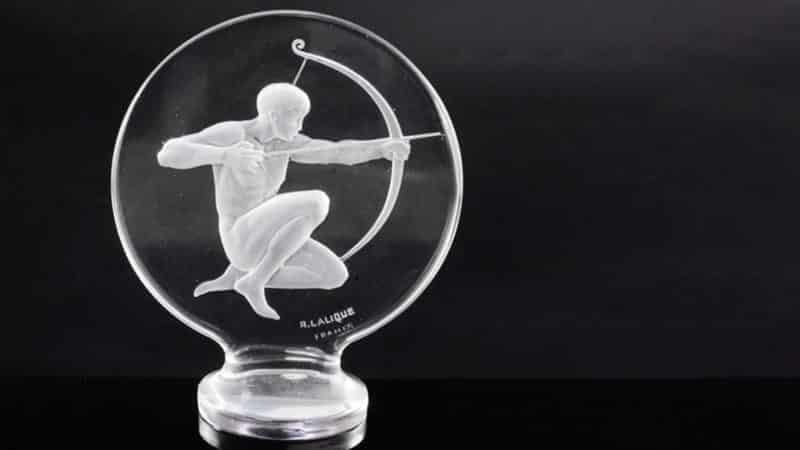Letters, February 2022
I am very glad that controversy now rages over F1 racing in countries with a record of human rights abuses. To some extent I can see both sides: I do hear, and join the cry for a ‘politics-free return to the purity of the sport’ in these times of ‘penalty pandemic’. But this, in my view, is not a political issue. It’s a humanitarian one. Just because I have been an F1 fan since the day Stirling Moss crashed in 1962 does not make me immune to suffering. I am a human being first and a petrolhead second. No one on Earth has a right to oppress another, and turning a blind eye is, in my view, to be complicit.
The solution, in the short term at least, would appear to lie in the hands of global ambassador for equality Sir Lewis Hamilton. I can tell you this: as a working musician who moves in the world of reggae and blues, my many Afro-Caribbean colleagues and friends greatly admire him for his stance, and as a role model for their children.
It took courage to fly the LGBTQ colours in Qatar, and as this nail-biting season drew to a close, I was on edge to see how the Saudis would react. Would they allow Lewis’ protest? Would TV companies touch the topic? I was pleasantly surprised. Lee McKenzie’s interview with the Saudi sports minister pulled no punches. There was engagement, and open dialogue between the presenters which brings hope for the future. Lewis may have lost a title both protagonists deserved but in this area he is undisputed champion, doing himself, and a beleaguered F1, proud. To him, and to MS for broaching the issue, I offer the time-honoured ‘Brixton handshake’ and Caribbean compliment: “Maximum Respect”.
Tim Hain
Tadworth, Surrey

A petrol-powered charger for your electric car? This may be top of your Christmas gift list in 2030
The debate rolls on and on but I don’t envisage that the sale of fossil-fuelled vehicles can be stopped by 2030. The charging infrastructure, the source of this extra electricity demand, the raw materials needed for the batteries (the BBC Panorama documentary on cobalt mining in the Democratic Republic of Congo was a real eye-opener) and the range and cost of the vehicles are all major difficulties.
But I am sure if you were down the pub a hundred or so years ago the conversation would have been similar and the consensus would have been, “I think I’ll stick with my horse.”
For the time being, I think the attached photograph [above] says it all.
Nick Harman
Chardonnay, France
Once again you use your editorial [The Editor, December] to highlight your views on the unsuitability of countries in the Middle East to host F1. While not being an apologist for the actions of any of those countries I would ask you to consider whether such as Russia, Azerbaijan and Turkey have at least as many questions to answer.
Maybe our magazine is not the ideal platform for the dissemination of your political views. Otherwise, you are still the best motor sport magazine out there.
Gordon Calder
Helensburgh, Argyll and Bute
Having spent the last 50 years involved with the Jaguar V12 engine I was most interested in November’s V12 features. A lot of Jaguar V12 projects remained in the background. In the early 1970s there were some four-valve V12s that produced close to 400bhp in road trim and 627bhp in a full-race version. The development continued through slant-six engines (half a V12) culminating in the very successful AJ6 engine launched in 1983.
The V12 in the XJ220 prototype was probably derived from one of the early engines. To dismiss it as no more than a design study that was ‘not fit for purpose’ is a bit over the top. Maybe ‘not invented here syndrome’ had something to do with it. There was also a back-up race engine programme at the time of the Broadspeed Big Cat racers with single- cylinder work supporting a full-race single- cam V12 producing over 500bhp.
In 1977 Ron Beaty of Forward Engineering produced a 505bhp V12 which powered the hydroplane Miss Windermere V to a water speed record of 130mph. I believe this engine may have been later supplied to TWR at the start of their XJS Group A race project.
While enthusiastic about V12 engines for their superior refinement, aural qualities and charisma, they have their limitations in induction layout and exhaust tuning – exhaust groupings of four or five cylinders (V8, V10) give better results than groups of three or six.
In all the years of the F1 championships only once has a true 60-degree V12 powered a driver’s world championship-winning car, and that was from Honda for Ayrton Senna’s McLaren in 1991. Thus encouraged, Honda seriously invested in a complex wider angle V12 for 1992 only to be overwhelmed by Nigel Mansell’s Renault V10-powered Williams.
In a world in which politics is likely to classify it as ‘inappropriate’ the V12’s future is likely to become limited to a few very specialist applications. Nevertheless, we can still satisfy ourselves with the knowledge that the most important engine of all time, the Rolls-Royce Merlin, was a V12, and the overall combination of refinement, performance and sheer class still puts the V12 ahead of any alternatives.
Roger Bywater
AJ6 Engineering, Macclesfield
I loved the article on the Steering Wheel Club and was amazed that so much incredible historical material has vanished. It’s all out there somewhere, but where?
A few weeks ago I made an incredible discovery at a flea market near Liège. Spying a scruffy tarnished trophy on the floor, missing its mascot on top, I picked it up, popped the lid off and there inside was the missing mascot, a steering wheel with wings. I bought it very cheaply and could not wait to get the cleaner out to decipher the engraving properly. What had I found? Amazingly, the winner’s trophy for the last round for the Rothmans International Series at Oran Park, Australia, February 26, 1978. The series appears to be what followed on from the Tasman Series, being open to F1 and F5000 cars and driven by some handy drivers but no longer a roll call of the ‘top flight’ like in the ’60s.
On further investigation I found that the Belgian-based VDS team won all four rounds with a driver called Warwick Brown. It must have been handed onto a team member or sponsor and then fell prey to a house clearance.
Benoît Deliège’s fabulous book on the VDS history [Racing Team VDS by Claude Yvens and Christophe Gaascht] includes a picture [above] of Warwick Brown on the podium with my trophy in hand! What a thrill that was. Keep your eyes peeled; all the Steering Wheel Club stuff is hopefully still somewhere and may be waiting to be discovered.
Neil Leigh
Spa, Belgium
I found it very interesting to read about pedal cars in the November issue [Pedal to the Metal]. Speedway Motors which maintains The Museum of American Speed where I live in Lincoln, Nebraska, USA, have what is reputed to be the world’s largest collection of pedal cars. One half of an entire floor is devoted to them.
The remaining two-and-a-half floors of a 90,000 sq ft museum have a varied, rotating collection of different types of racing vehicles, from Bonneville LSR vehicles to 3⁄4 midgets and everything in between.
Fred Hall
Lincoln, Nebraska, USA

Looking for a radiator adornment like this Lalique Archer? Our reader is preparing a sale
I read with interest December’s Automobilia article An eye for figures. In it you quote Peter Card [of Transport Collector Auctions] saying that Chrysalis, which should have in fact been Chrysis (a mythological goddess), along with Victoire are often faked. This is not strictly true as they are simply copied by various Eastern European factories in the style of Lalique.
In fact I’ve been over to see them being produced and they are quite crude compared to the inter-war period Lalique originals. The Archer mascot that you illustrate is in fact from my own collection and was sold by Gorringe’s auction house in Lewes. I’m in the process of preparing more for sale.
GG Weiner (Author Unique Lalique Mascots)
East Sussex
After many decades reading, it’s always a pleasure to receive a new issue, in this case December’s. I was very impressed with your editorial. One major point came to mind. Hydrogen. I believe it is time for Motor Sport to devote an article to the gas of the future. Sources such as Ross Brawn, JCB, Mazda and others are all looking seriously at hydrogen. Opponents today merely repeat the reasons against electricity a decade ago.
Nic Maennling
Ontario, Canada
F1 finale reaction
I can no longer stomach GP racing, because of the woeful administration, and in particular Michael Masi’s decision to end the race with a one-lap sprint, a virtual gift to Verstappen on new tyres with the lapped runners removed, all because he wanted to see a ‘race’. The Indy 500 often ends under yellows and its reputation is not diminished by it. It is clear that F1 is no longer a sport and the FIA is in league with the commercial owners and promoters to ensure spectacle overrides fair play. I am done with it.
Neil Kirby
Brentwood, Essex
Never have I witnesses such blatant disregard of the FIA’s own rules to engineer the outcome of a race, let alone a title. I know Lewis Hamilton will rise above this. However, it is the long-time fans that bear the brunt of this insult to sporting decency. This result marked the end of F1 as a sport, becoming merely entertainment. It was appalling to watch, and I am embarrassed for all the new fans the sport has won recently who saw it. There is no value in race outcomes such as this. The FIA has set an unbelievably bad precedent. Alas, as a fan for many years I have sadly become used to the disregard and contempt with which they treat the fans of Formula 1.
Ian Dailey
Vancouver, Canada
Firstly, I agree that Max is the worthy champion of 2021. Secondly, Lewis demonstrated his magnanimity in defeat. He is a class act, a worthy runner-up and ambassador for the wider world of F1, and drove superbly well. Thirdly, the FIA must get its act together. The decision-making is pitiful. In a high-speed sport there is no time for ambiguity, or hesitation. To start a dialogue during the race is not the way. Michael Masi (pictured below) needs to up his game or leave the pitch.
Steve Taylor
Stroud, Glos
I question whether one individual has the bandwidth under pressure to make the right decisions. A change of mind under pressure from Red Bull resulted in the FIA directly instigating the outcome of the 2021 championship against the status of the race to that point. I hope that Mercedes appeals not so much to change
the result but to show the existing inadequacies in the hope of a complete reappraisal of rules on driving standards and race procedure and how they are enforced.
Peter Goodman-Smith
By email
Contact us
Write to Motor Sport, 18-20 Rosemont Road, London, NW3 6NE
or e-mail, [email protected]

